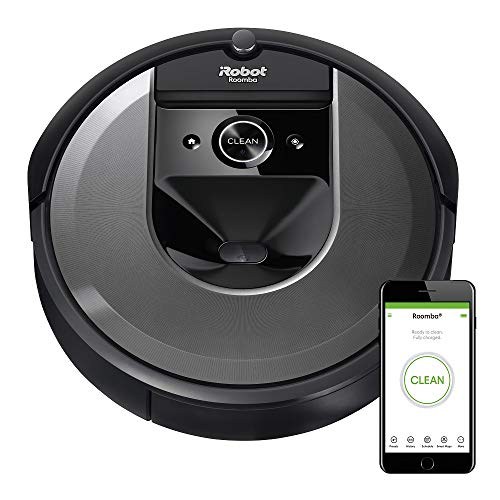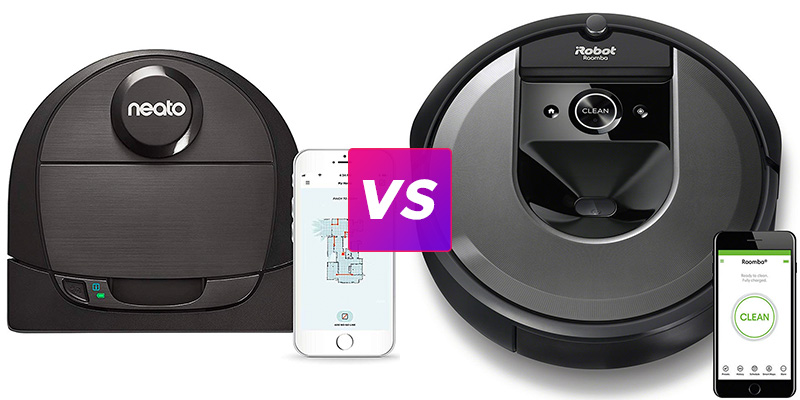
The Roomba does have what iRobot calls “dirt detect”, where it makes several passes when it detects large amounts of debris. On hard floors where airflow was a bit more important, we found that they both picked up all the debris in the test, but the Neato tended to pick up more on its first pass in the Roomba did. As an Amazon Associate we earn from qualifying purchases. We tested the Neato twice since it has two power settings and found that it did just as good in its low power mode with no noticeable difference. They both were absolutely great with carpets, picking up everything we put down, from fine debris to pet hair to extra-large debris. We should mention that either way those numbers are pretty high for robot vacuum, and it showed in the pickup test we did.

The i7+ only has one power setting which we measured at 17 CFM while the Neato D7, which has two power settings, actually has the same power as the Roomba i7+ in its low power mode, 17 CFM, but the Neato D7 jumps to 20 CFM in its high power mode. We tested the air flow of both robots and found that the Neato D7 was more powerful than the Roomba i7+. But first we want to jump right into the tests.

We’ll get into all the cool new features of each of these robot vacuums later on in this comparison which we think will be the deciding factor in choosing a winner in this competition. We put the Roomba i7+ and the Neato D7 through a bunch of tests, and in this article, we will summarize those results and pick which robot vacuum cleaner we think is the best.


 0 kommentar(er)
0 kommentar(er)
